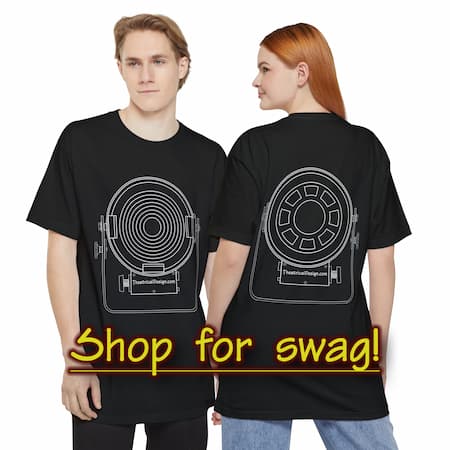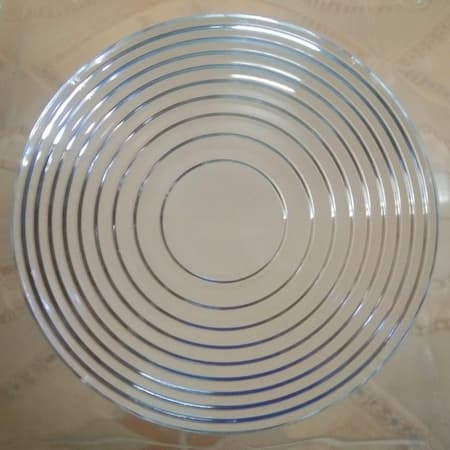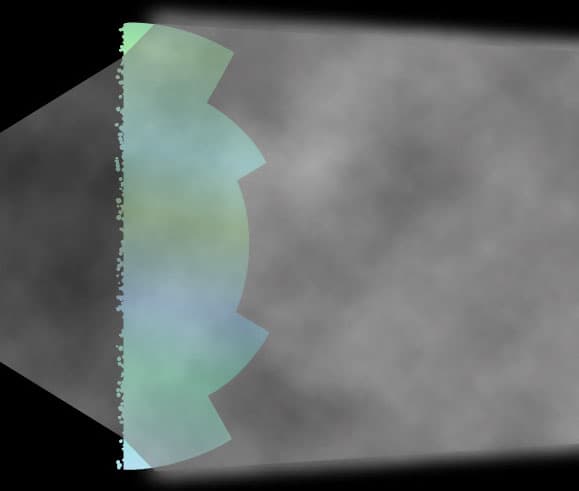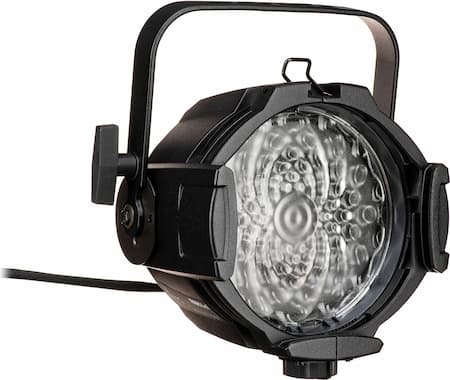Get Your Theatrical Design Swag!
Glass is very thick, heavy, and expensive. It gets hot. The heat would build up to a point where the glass would shatter.
Fresnel discovered a way to eliminate massive heat buildup and the need for large spheres of glass. He realized that as the light is only refracted when it hits the edge of the glass, the thickness of the glass was irrelevant as long as the refracting surface was the same as that of a sphere.
The Fresnel lens was developed in 1823 by French physicist Augustin-Jean Fresnel for use in lighthouses. Fresnel took a spherical lens and mathematically determined how to drop the rounded edge of the lens in a way that maintains the effect but without the thickness of the glass.
Now, named after the scientist who developed the idea, we have fresnel lenses in most lighthouses. We also use Fresnel lenses in the lighting instruments we also named after him; “Fresnels”.
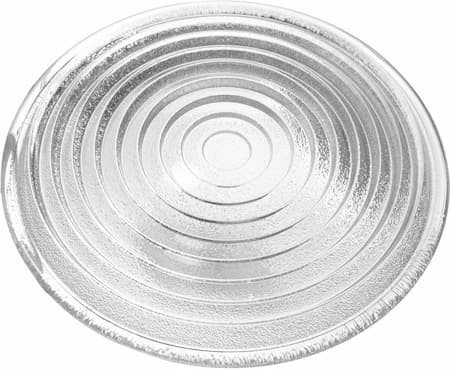

Fresnel lens from a lighting instrument
Trouble viewing the video? Watch it directly on Vimeo.

Fresnel lens, dated 1870, displayed at the Musée national de la Marine, Paris. In this case, the dioptric prisms (inside the bronze rings) and catadioptric prisms (outside) are arranged to concentrate the light from the central lamp into four revolving beams, seen by sailors as four flashes per revolution. The assembly stands 2.54 meters (8.3 ft) tall and weighs about 1.5 tonnes (3,300 lb).
A problem arose with this application; rings, or “dips” appeared in the light where the edge in the glass had been cut. “Sandblasting” or “Sand pocking” was used to texture the flat-cut glass edges. This texturing allowed the light to diffuse, solving the problem of rings.
Another way to make a rounded lens not so thick was to cut into the flat side, as opposed to the rounded side as Mr. Fresnel did. This lens was called the step lens and was used in early ellipsoidal units, but the step lens also created shadowed rings of light normally considered undesirable.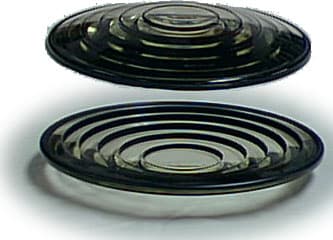

Step lens from a lighting instrument
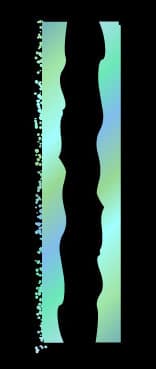 Beginning in 2004, Electronic Theatre Control (ETC) has also offered a ParNel fixture which makes use of “wavy” lenses. The fixture uses two lenses; a “wave/clear” (in a fixed position) and a “wave/stippled” lens in a rotating ring. The wave surfaces face each other, and then the ring is rotated, the unit can be “spotted” or “flooded” similar to a Fresnel fixture. Although the ParNel fixture is not based on a single curved shape like the Fresnel or step lens, I include it here because it always throws a “soft” light.
Beginning in 2004, Electronic Theatre Control (ETC) has also offered a ParNel fixture which makes use of “wavy” lenses. The fixture uses two lenses; a “wave/clear” (in a fixed position) and a “wave/stippled” lens in a rotating ring. The wave surfaces face each other, and then the ring is rotated, the unit can be “spotted” or “flooded” similar to a Fresnel fixture. Although the ParNel fixture is not based on a single curved shape like the Fresnel or step lens, I include it here because it always throws a “soft” light.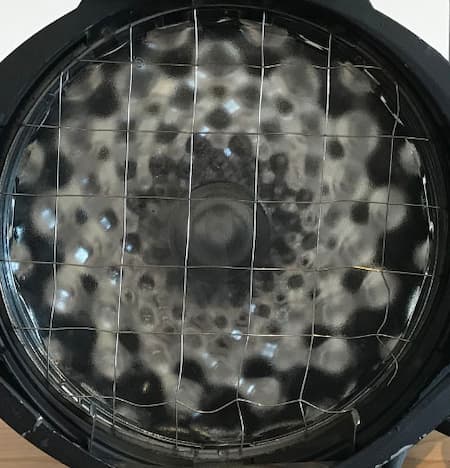
ETC PARNel.
A “very narrow” par lamp has clear glass, a “narrow” par lamp has sand pocked glass, and the medium and wide par lamps have more serious bumps to diffuse the light even more.
When used in Par Can lighting instruments, the par lens is built into the lamp along with the reflector.
| This information is regarding traditional par lamps & par cans. Many Light Emitting Diode (LED) instruments are also considered “pars”; because LEDs throw a narrow light. More information about those are covered in the section “LED instruments”. |
Very Narrow Par Lamp
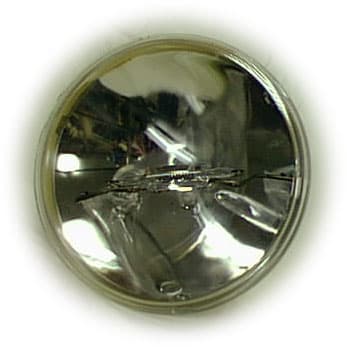
Narrow Par Lamp
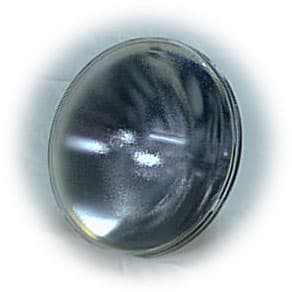
Medium Par Lamp
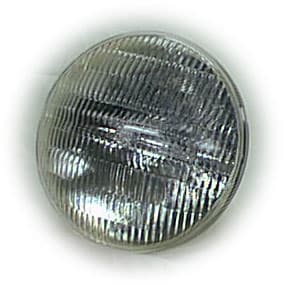
Wide Par Lamp
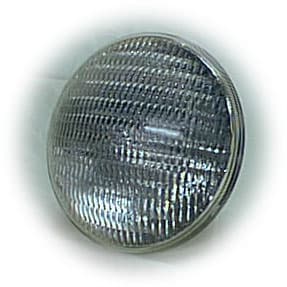
Par Lamp from the side
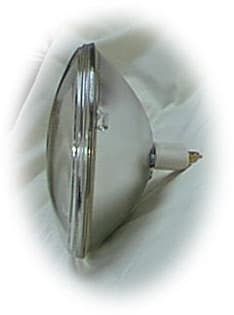
From the side, all par lamps look similar.
Lighting designers wanted a lens that could control the light even more efficiently than the earlier ones and that would not have dark rings inside the lens. They wanted a lens that could throw a more controllable beam of light.
A way to provide this clear controllable beam of light was to use two plano-convex lenses. A plano-convex lens is flat on one side, like a plane, and the other side is convex or rounded.
Placing the lenses with the convex sides facing each other simulated a larger rounded lens and as the glass was smooth on both sides of the lens, there were no dark rings in the light.
So, you see there are four common lenses used in the theatre today.
- The step lens is no longer used, although it can be found in some older ellipsoidal instruments.
- The Fresnel lens used in Fresnel instruments
- The Wavy lens used in ParNels
- The Par lens (with varying degrees of diffusion built-in) used in par-cans
- The Plano-convex lenses used in ellipsoidal instruments
| Note that for each of these types of lenses: different sizes, thickness, and dimensions are used for different size instruments. |

